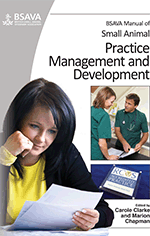
Full text loading...

Flexible endoscopy has been used for many years for investigation of the respiratory and gastrointestinal tracts, and in recent years rigid endoscopy has become much more widely used for routine procedure in general practice. This chapter assesses equipment, purchasing options and managing the endoscopy service.
Endoscopy, Page 1 of 1
< Previous page | Next page > /docserver/preview/fulltext/10.22233/9781910443156/9781910443156.10-1.gif

Full text loading...

















